I was very glad to encounter his great triptychs again, Departure, 1933-35, at MOMA and Beginning, 1949, at the MET.
The MOMA's catalog states such about Departure:
In the right panel of Departure, Beckmann once said, "You can see yourself trying to find your way in the darkness, lighting the hall and staircase with a miserable lamp, dragging along tied to you, as part of yourself, the corpse of your memories." The triptych is full of personal meaning, and also of mysteries. The often-appearing fish, for example, are ancient symbols of redemption, but may also connote sexuality. Perhaps the woman under torture gazes prophetically into a crystal ball—but what she seems to see is the daily paper. Men's faces are hidden: averted in the side panels, masked in the center. Is it the same couple whose fate each image tracks?
Beckmann's accounts of Departure are fragmentary, and, in any case, he believed that "if people cannot understand it of their own accord, . . . there is no sense in showing it." But the work, however elusive in its details, is clear overall: painted at a dark time in Germany (that of Hitler's rise to power), it tells of harsh burdens and sadistic brutalities through which the human spirit, regally crowned, may somehow sail in serenity. Beckmann called the center panel "The Homecoming," and said of it, "The Queen carries the greatest treasure—Freedom—as her child in her lap. Freedom is the one thing that matters—it is the departure, the new start."
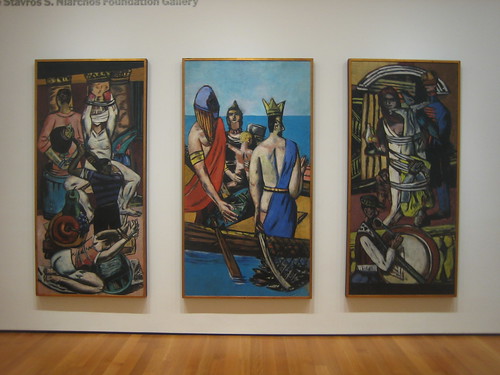
Departure, 1933-35, Max Beckmann, MOMA

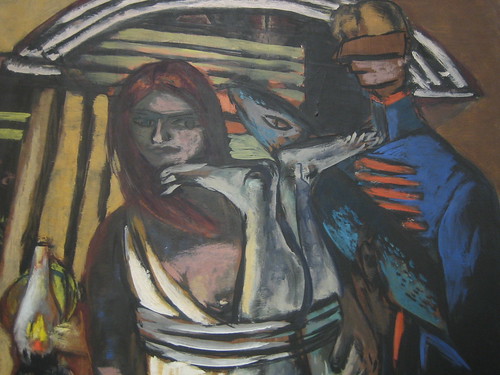

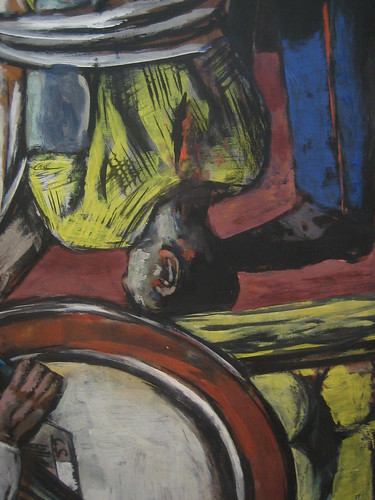


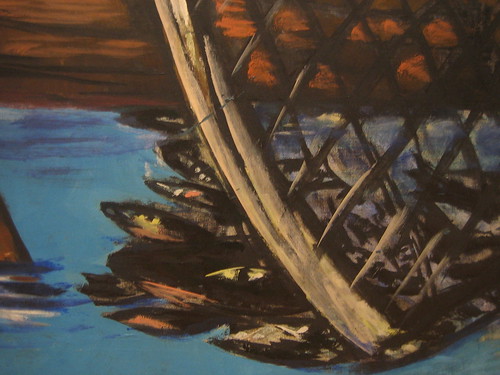
It was very interesting to compare this, made in one of the darkest moments of human history, to that at the MET, made at the end of the nightmare and the beginning of the new growth, yet it was still hard to find hope. Less than a nightmare, disturbing nonetheless.
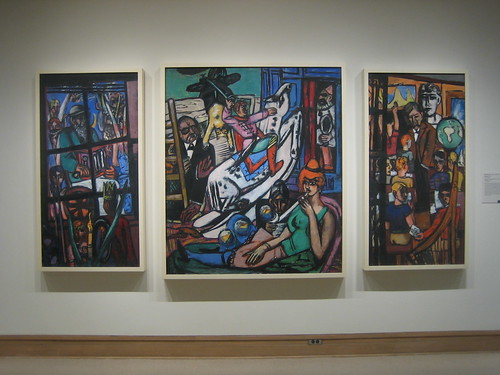
Beginning, 1949, MET
MET's website says such about the above Beginning:
The theme that connects the three panels of "Beginning," the most autobiographical of Beckmann's ten triptychs, is a childhood dream. The central panel shows a playroom where a little boy in military costume brandishes a sword as he mightily rides a rocking horse. His Puss 'n Boots doll hangs upside down behind him, presumably slayed by his weapon. The noise he makes has alarmed his parents (seen at the left near the ladder), who have climbed up to inspect his attic kingdom. More prominently placed is the figure of a redheaded woman who reclines seductively, blowing blue bubbles from a pipe. Squeezed between the boy and his fantasy is an old grandmother reading a newspaper. To the left and right, on separate panels, Beckmann painted other memories from his childhood — a hurdy-gurdy grinder and a classroom with teacher and students.
At each museum, I also saw other pieces by Beckmann: The Descent from the Cross, 1917, at MOMA, and Vaudeville Act, 1934 and 1937, at the MET:
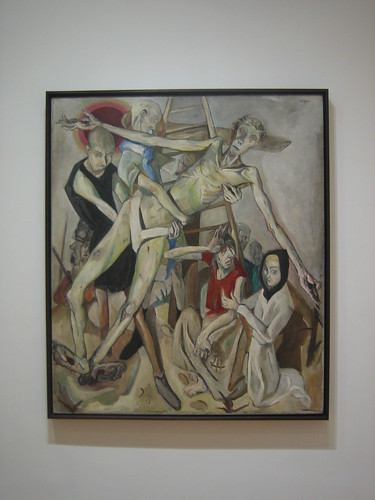
The Descent from the Cross, 1917, Max Beckmann, MOMA
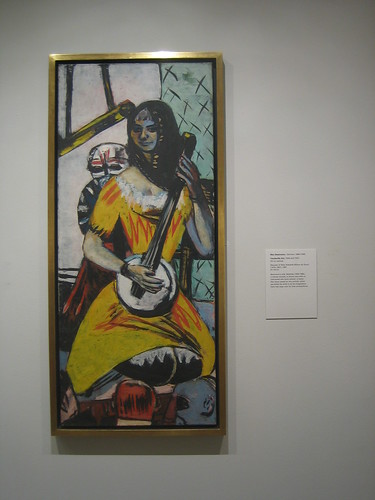
Vaudeville Act, 1934 and 1937, MET
I was less smitten by his works in his early period, when his palette was pale and corpse like. I truly love his color palettes from 1930s onwards. Take Vaudeville Act for example, the wonderful contrast of yellow and red on the dress, the black scarf between the yellow dress and pale green screen/curtain, and the blue and red color patches of the audiences webbed a world both beautifully reassuring and unnaturally otherworldly. On surface, this is rather a jovial work, but the creepy figure with white and black face lurched behind the instrument player told us more. What a scary world he endured and what wonderful output he gave us.
>> New York City Report, September 2010, Part XIV: Neue Galerie New York - Austrian and German Art Gallary
<< New York City Report, September 2010, Part XII: 19th and 20th Century Art at the MET





Nicely done, Matthew. I want to go back and look at these triptychs again!
ReplyDelete